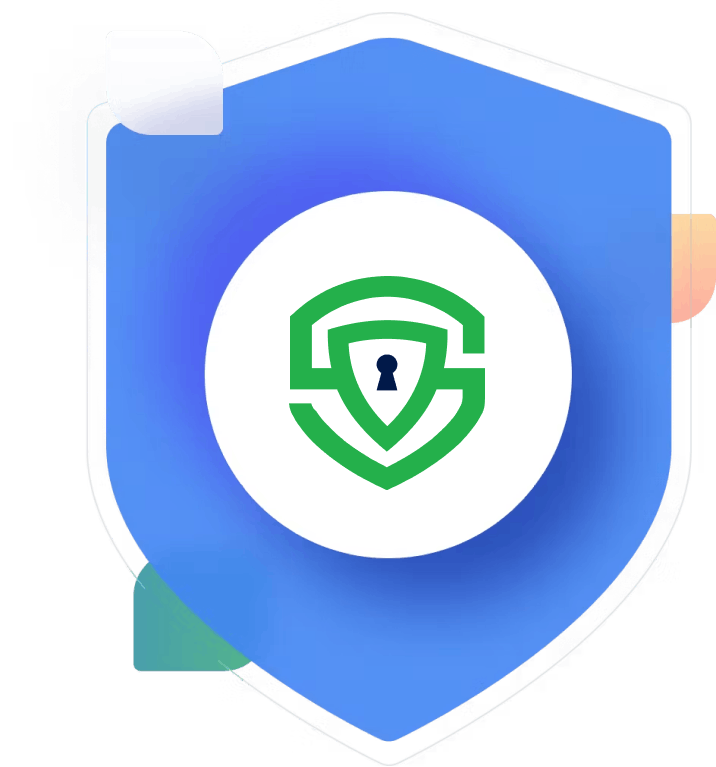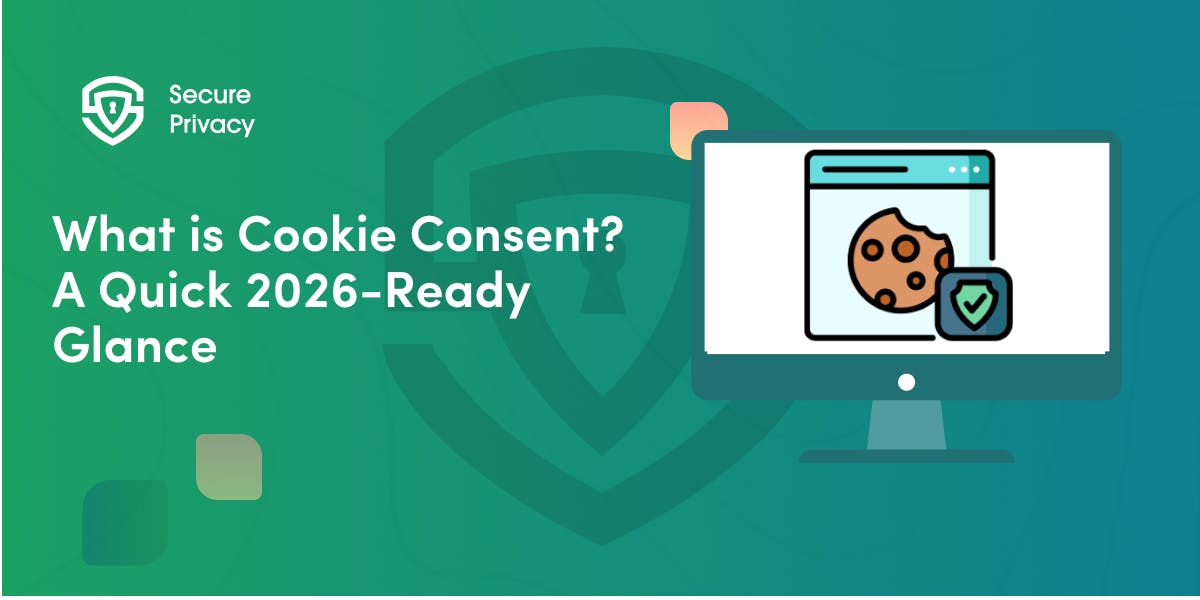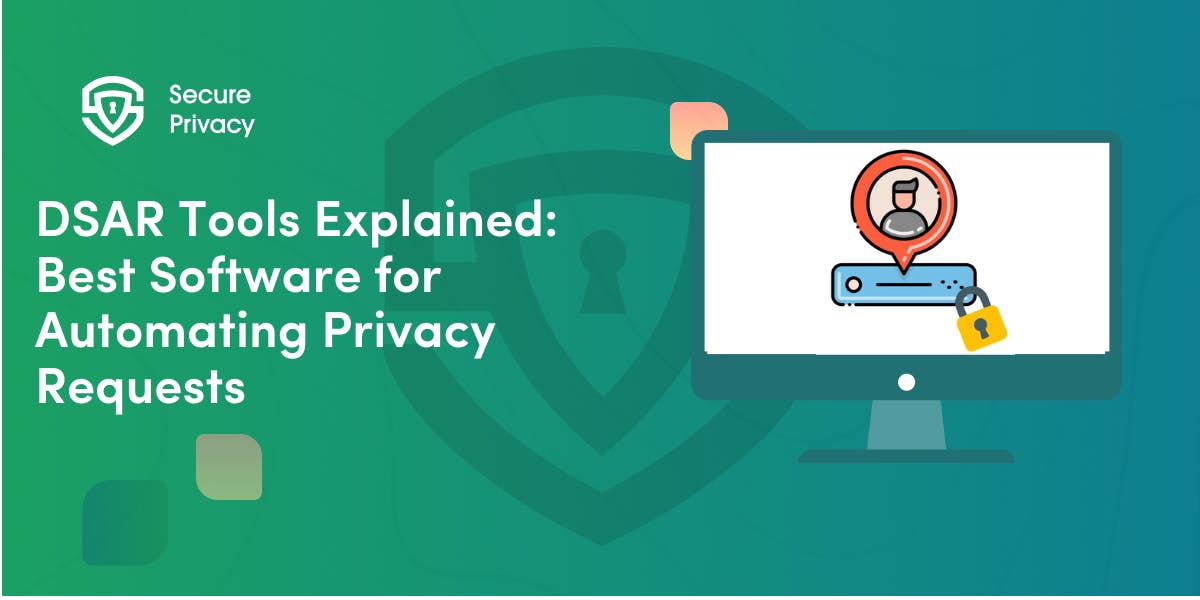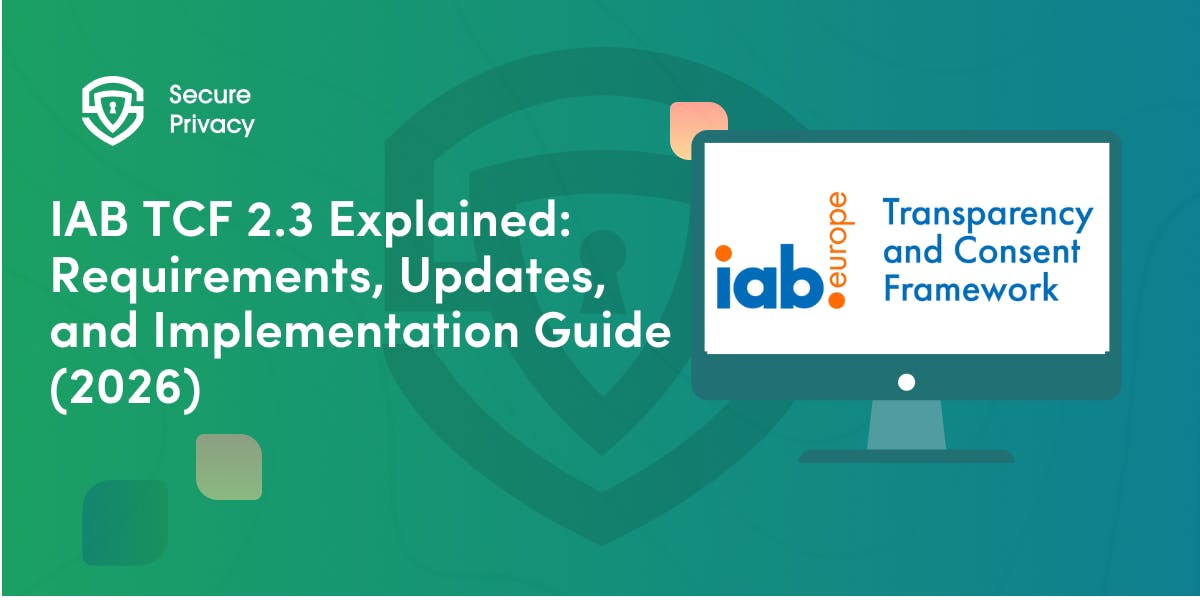Enterprise Privacy Dashboards: What to Track, Why It Matters, and How to Automate It
Your DPO is drowning in spreadsheets, regulatory deadlines are missed, and executive stakeholders are demanding privacy metrics you can't quickly produce. If this sounds familiar, you're experiencing the limitations of manual privacy program management that enterprise privacy dashboard solutions are designed to solve.
Traditional privacy management approaches (compare mature privacy programs) using disparate tools and manual reporting create dangerous visibility gaps. When privacy incidents occur or regulators request documentation, organizations scramble to compile information from multiple sources, often discovering compliance gaps too late to prevent penalties.
In this guide, you'll learn what enterprise privacy dashboards track, why they're essential for modern privacy programs, and how automation transforms privacy management from reactive compliance to proactive risk management.

Prioritizing user privacy is essential. Secure Privacy's free Privacy by Design Checklist helps you integrate privacy considerations into your development and data management processes.
Understanding Enterprise Privacy Dashboards
What Defines an Enterprise Privacy Dashboard
Our enterprise privacy dashboard serves as a centralized command center that aggregates, visualizes, and analyzes privacy-related data across an organization's entire digital ecosystem. Unlike basic compliance tools, enterprise dashboards provide real-time monitoring capabilities, predictive analytics, and automated compliance tracking.
These platforms integrate with multiple data sources including CRM systems, marketing automation tools, HR databases, and cloud infrastructure. The integration provides comprehensive visibility into personal data processing activities that manual approaches cannot achieve at scale.
Modern enterprise dashboards incorporate artificial intelligence and machine learning to automatically identify privacy risks, predict compliance gaps, and recommend remediation actions. This intelligent automation reduces manual effort while improving accuracy and consistency.
Enterprise vs Basic Privacy Tools
GDPR dashboard for enterprises requirements extend far beyond cookie consent banners or simple privacy policy generators. Enterprise solutions must handle complex multi-jurisdictional compliance, cross-entity oversight, and sophisticated risk assessment capabilities that basic tools cannot provide.
Basic privacy tools typically address single compliance areas like cookie consent or policy generation. Enterprise dashboards provide unified visibility across all privacy program components including consent management, data subject rights, vendor risk assessment, and regulatory reporting.
Enterprise privacy dashboard solutions support role-based access controls, customizable views, and automated workflows that accommodate complex organizational structures across multiple business units, geographic regions, or client portfolios.
Critical Metrics for Privacy Program Success
Records of Processing Activities (RoPA) Management
RoPA dashboard functionality automates the creation and maintenance of processing records required under GDPR Article 30 and similar regulations. These systems automatically populate entries based on data discovery results, system integrations, and documented processing activities.
Modern RoPA management includes automated data flow mapping, legal basis tracking, retention schedule management, and vendor relationship documentation. The systems maintain live inventories that update automatically as new processing activities are identified.
Advanced capabilities include multi-jurisdiction support, template libraries for common processing activities, and integration with legal databases to ensure accurate regulatory mapping. Organizations can generate regulator-ready reports and maintain comprehensive documentation for audit purposes.
Data Subject Request Performance
Real-time DSAR dashboard capabilities track key performance indicators including request volume, response times, completion rates, and request type distribution. These metrics help organizations identify bottlenecks, resource needs, and process improvement opportunities.
Automated DSAR workflows handle request intake, identity verification, data discovery, and response generation across multiple regulatory frameworks. Advanced systems provide bulk request processing, intelligent data discovery, and secure delivery mechanisms for response packages.
Performance analytics identify trends in request patterns, seasonal variations, and potential compliance risks. Organizations can proactively adjust resources and processes based on predictive analytics rather than reactive management approaches.
Consent Management and Privacy Risk Assessment
Privacy compliance dashboard systems track consent collection rates, withdrawal patterns, preference changes, and regulatory compliance across different data processing purposes. These metrics provide essential insights for marketing effectiveness and legal compliance.
Privacy risk monitoring interface capabilities continuously evaluate risks across the organization's data landscape. These systems analyze factors including data sensitivity, processing purposes, retention periods, access controls, and regulatory requirements to generate dynamic risk scores.
Risk assessment engines incorporate machine learning algorithms that identify patterns, predict potential issues, and recommend specific mitigation measures. The platforms can model breach likelihood, regulatory risk exposure, and business impact scenarios.
Essential Dashboard Features for DPOs
Real-Time Compliance Health Monitoring
DPO reporting software must provide comprehensive real-time visibility into compliance status across multiple regulatory frameworks including GDPR, CCPA/CPRA, HIPAA, and emerging state privacy laws. The systems track compliance indicators including policy adherence, deadline management, and regulatory requirement fulfillment.
Automated alert systems notify stakeholders of approaching deadlines, policy violations, and emerging privacy risks. These systems detect anomalous data access patterns, unauthorized data transfers, and potential compliance gaps before they escalate into violations.
Executive-level compliance scorecards provide board-ready summaries while enabling drill-down capabilities for operational teams. Color-coded status indicators and trend analysis help stakeholders quickly understand current compliance posture and emerging risks.
[Learn how you might be affected in the wake of OneTrust's Private Equity Deal]
Multi-Entity and Cross-Border Management
Enterprise organizations require privacy metrics reporting tool capabilities that support complex corporate structures including subsidiaries, franchises, joint ventures, and international operations. Multi-entity dashboards provide consolidated views while maintaining entity-specific compliance tracking.
Cross-border data transfer monitoring ensures compliance with adequacy decisions, standard contractual clauses, and binding corporate rules. The systems track data flows, assess transfer mechanisms, and monitor regulatory changes affecting international operations.
Privacy dashboard SaaS solutions generate automated reports for various stakeholders including executives, legal teams, audit committees, and regulatory authorities. Report templates adapt to different audience needs while maintaining consistent data sources and calculation methods.
Audit trail capabilities capture all privacy-related activities including policy changes, consent collection, data subject requests, and risk assessments. These comprehensive logs provide evidence for regulatory compliance and support forensic analysis when needed.
Agency and Multi-Client Management
Privacy service providers require enterprise privacy dashboard capabilities that support multiple client environments while maintaining data isolation and customized branding. White-label portals enable agencies to provide professional privacy services under their own brand identity.
Privacy compliance dashboard services efficiently while maintaining high-quality client relationships through automated client reporting including scheduled compliance summaries, incident notifications, and performance metrics that demonstrate service value and regulatory adherence.
Service Level Agreement Monitoring
Agency dashboards must track service delivery metrics including response times, resolution rates, completion percentages, and client satisfaction scores. These capabilities support SLA compliance and enable proactive service improvement initiatives.
Performance benchmarking compares service delivery across different clients, identifying best practices and improvement opportunities. Agencies can optimize resource allocation and service delivery based on comprehensive performance analytics.
Secure Privacy's Enterprise Dashboard Solution
Comprehensive Integration Capabilities
Secure Privacy's enterprise privacy dashboard integrates seamlessly with existing business systems including CRM platforms, marketing automation tools, customer support systems, and cloud infrastructure. API-based connections ensure real-time data synchronization without manual intervention.
The platform supports both cloud-based and on-premises deployments with hybrid capabilities that address data residency requirements while providing scalable analytics and reporting. Multi-cloud support enables comprehensive privacy management across diverse technology environments.
Advanced Analytics and Predictive Intelligence
Machine learning algorithms analyze privacy data patterns to identify emerging risks, predict compliance challenges, and recommend proactive remediation measures. Predictive analytics help organizations prevent privacy incidents rather than simply responding to them.
Natural language processing capabilities automate analysis of privacy policies, vendor contracts, and regulatory documents to identify compliance requirements and potential conflicts. This technology significantly reduces manual legal review requirements for comprehensive privacy metrics reporting tool management.
Anomaly detection systems monitor data access patterns, consent trends, and user behavior to identify potential security incidents or compliance violations. Early warning capabilities enable rapid response before issues escalate.
Customizable Views and Role-Based Access
Dashboard customization enables different stakeholder groups to access relevant information while maintaining appropriate access controls. Executives receive high-level strategic insights while operational teams access detailed compliance data and workflow management tools.
Regional and business unit filtering provides localized views while maintaining enterprise-wide visibility. Organizations can manage global privacy programs while addressing specific geographic or operational requirements.
Return on Investment and Business Benefits
Quantifiable Cost Savings
Privacy compliance dashboard implementation generates measurable returns through automation of manual processes, reduction of regulatory risk exposure, and improvement of operational efficiency. Organizations typically achieve ROI within 12-18 months through reduced labor costs and risk mitigation.
Automated compliance reporting saves significant time previously spent on manual data compilation and report generation. Privacy teams can focus on strategic initiatives rather than administrative tasks, improving overall program effectiveness.
Risk reduction benefits include early identification of compliance gaps, proactive remediation of privacy risks, and demonstration of accountability to regulators. These capabilities significantly reduce the likelihood and impact of regulatory enforcement actions.
Stakeholder Confidence and Trust
Comprehensive privacy dashboards demonstrate organizational commitment to privacy protection and regulatory compliance. Board members, customers, business partners, and regulators gain confidence in privacy program effectiveness through transparent reporting and accountability measures.
Customer trust improvements result from demonstrable privacy protection measures and transparent data handling practices. Organizations with mature privacy programs often experience improved customer relationships and competitive advantages.
Future Trends and Emerging Technologies
Artificial Intelligence and Automation Advancement
Privacy dashboard SaaS solutions increasingly incorporate advanced AI capabilities including natural language processing, predictive analytics, and automated decision-making. These technologies enable more sophisticated risk assessment and compliance automation.
Machine learning algorithms become more accurate and useful as they process larger datasets and learn from organizational patterns. Predictive capabilities will enable privacy programs to prevent issues rather than simply respond to them.
Privacy-Preserving Analytics
Emerging privacy-preserving technologies including differential privacy, federated learning, and homomorphic encryption enable analytics while protecting underlying personal data. These approaches address growing privacy requirements while maintaining business intelligence capabilities.
Zero-knowledge architectures allow privacy dashboards to provide insights without exposing personal information. These technologies become particularly valuable for organizations handling extremely sensitive data or operating in highly regulated industries.
Ready to transform your privacy program from reactive compliance to proactive risk management?
Secure Privacy's enterprise privacy dashboard provides comprehensive automation, intelligent analytics, and seamless integration capabilities that enable effective privacy program management at scale. Experience the difference that purpose-built enterprise privacy technology makes for your organization.
Frequently Asked Questions
What should an enterprise privacy dashboard track for GDPR compliance?
GDPR dashboard for enterprises must track Records of Processing Activities (RoPA), data subject request performance, consent management metrics, privacy impact assessments, breach incidents, and vendor compliance status. The dashboard should provide real-time visibility into all Article 30 requirements and automated reporting for regulatory authorities.
How does an enterprise privacy dashboard differ from basic privacy tools?
Enterprise privacy dashboard solutions provide centralized visibility across multiple compliance areas, support complex organizational structures, and offer advanced analytics capabilities. Basic tools typically address single compliance areas while enterprise solutions integrate consent management, DSAR automation, risk assessment, and regulatory reporting in unified platforms.
What ROI can organizations expect from privacy dashboard implementation?
Privacy compliance dashboard implementations typically achieve ROI within 12-18 months through automation of manual processes, reduction of regulatory risk exposure, and improved operational efficiency. Organizations report 60-80% time savings in compliance reporting and significant risk mitigation benefits.
How do privacy dashboards support multi-entity organizations?
Privacy metrics reporting tool capabilities for multi-entity organizations include consolidated views across subsidiaries, jurisdiction-specific compliance modules, cross-border data transfer monitoring, and entity-specific access controls. The systems provide enterprise oversight while maintaining operational autonomy for different business units.
What integration capabilities should enterprise privacy dashboards provide?
Privacy dashboard SaaS solutions should integrate with CRM systems, marketing automation tools, HR databases, cloud infrastructure, and security platforms through APIs. Real-time data synchronization, automated workflow triggers, and bi-directional data exchange ensure comprehensive privacy program visibility.
How do agencies use enterprise privacy dashboards for client management?
Agency implementations include white-label client portals, multi-client oversight capabilities, SLA monitoring, automated client reporting, and centralized resource management. Enterprise privacy dashboard solutions enable agencies to scale privacy services while maintaining high-quality client relationships and operational efficiency.
Get Started For Free with the
#1 Cookie Consent Platform.
No credit card required

What is Cookie Consent? A Quick 2026-Ready Glance
Your website loads. Cookies track users. But without proper cookie consent, you're violating GDPR — risking fines up to €20 million or 4% of global revenue. Cookie consent is the legally required mechanism by which websites obtain explicit user approval before deploying non-essential tracking technologies. This requirement stems from GDPR Article 4(11) and the ePrivacy Directive, mandating that consent must be freely given, specific, informed, and unambiguous.
- Legal & News

DSAR Tools Explained: Best Software for Automating Privacy Requests
You're drowning in data subject access requests. Manual searches through dozens of systems miss regulatory deadlines and expose organizations to fines starting at $2,500 per violation. The solution? DSAR tools — purpose-built software that automates the entire process of responding to data subject access requests, from intake to delivery.
- Legal & News

IAB TCF 2.3 Explained: Requirements, Updates, and Implementation Guide (2026)
Your ad revenue dropped 40% overnight. Google stopped bidding on your inventory. Your DSP partners flagged your traffic as non-compliant. The culprit? An outdated TCF 2.2 consent string after the February 2026 enforcement deadline.
- Legal & News
- Cookie Consent
